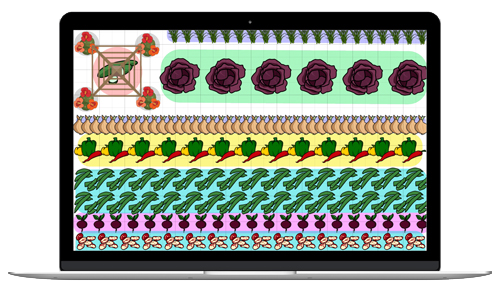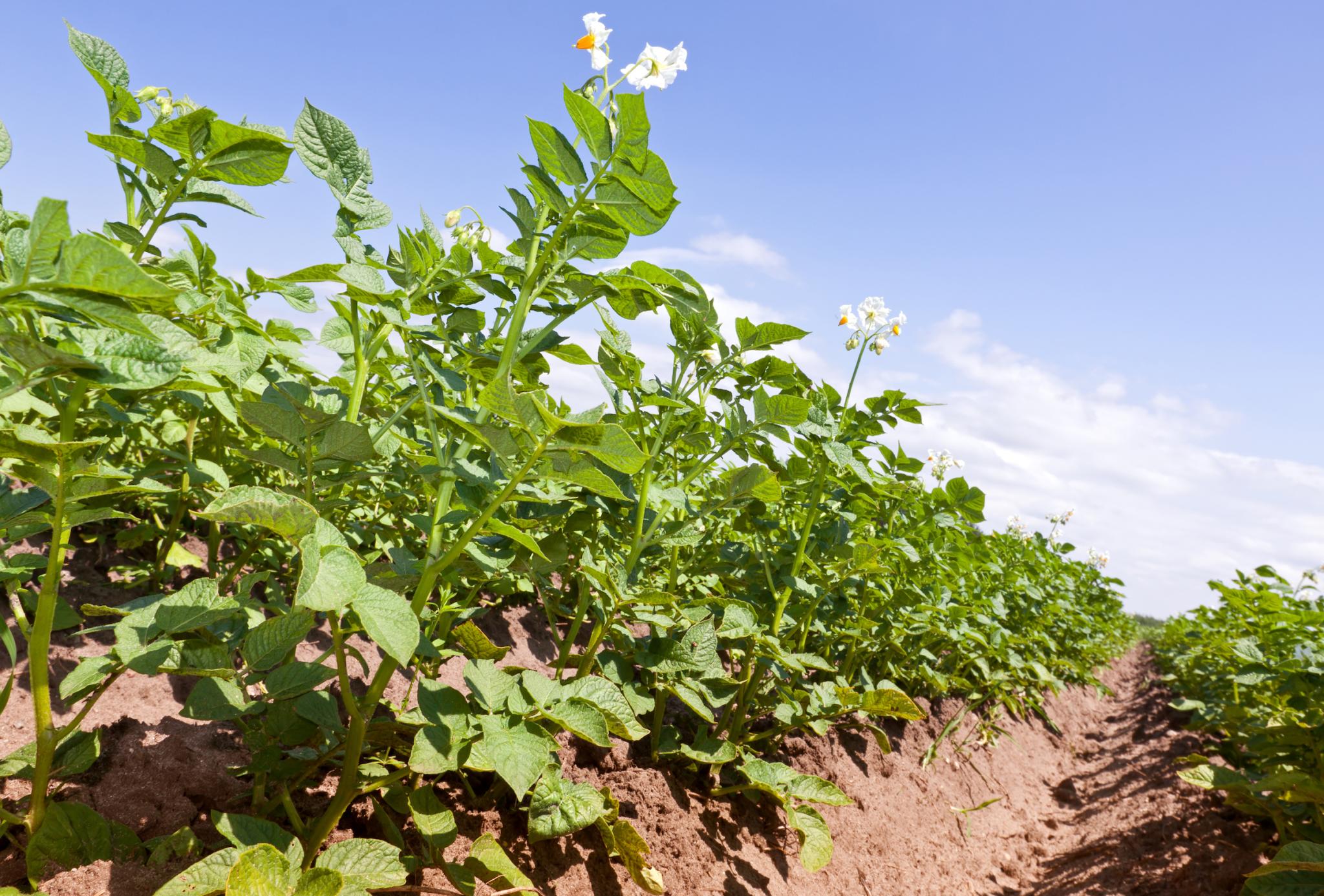
Planting, Growing, Harvesting, and Storing Potato Plants
The Almanac Garden Planner - Use It Free for 7 Days!
Plan your 2025 garden with our award-winning Garden Planner.
There are three classifications for potatoes based on when you harvest (vs. when you plant). If you harvest for storage, be sure to choose the right type:
- Early-season potatoes: first to be planted in early spring. Grow quickly (60 to 80 days), ready to harvest by early summer, tender flesh, thinner skin, store up to a few weeks.
- Mid-season potatoes (aka second early potatoes or “earlies”): mature in 80 to 100 days, typically lifted up from second half of summer, store up to a month.
- Late crops: mature in 100 to 130 days, best for storing, lasting 2 to 3 months in the right conditions; planted in August and harvested in fall.
Also, decide on the texture and flavor of your potatoes, and how you’d like to eat them:
- Dry-fleshed, mealy potatoes like russets and long white potatoes are used for baking, frying, and mashing. As mashed potatoes, they will not be gluey, and they will absorb gravy, butter or sour cream.
- Moist, waxy, round potatoes are great in soups, curries, frittatas, and salads because they don’t fall apart when cooked. You can pan-fry leftover boiled potatoes. When you mash waxy potatoes, they can become sticky.
- Red-skinned potatoes are often used for boiling or for potato salads.
Some popular potato varieties, such as ‘Yukon Gold’, fall somewhere in between truly waxy and mealy.
There are over 100 potato plant varieties! Go beyond the Idaho potato to explore more exotic and delicious options. See our article on choosing the best potato varieties!
Early Varieties:
- ‘Irish Cobbler’: tan skin, irregular shape (great heirloom potato for delicious mashed potatoes!)
- ‘Red Norland’: deep red skin, sweet, delicate flavor, great in potato salads or boiled
- ‘Mountain Rose’: red skin and pink flesh, resistant to some viruses
Mid-Season Varieties
- ‘Yukon Gold’: popular, tan skin and buttery-yellow flesh, mid to large size
- ‘Red Pontiac’: red skin, deep eyes (easiest and most adaptable red potato there is to grow)
- ‘Viking’: red skin, very productive
- ‘Chieftan’: red skin, resistant to potato scab, stores well
Late Varieties
- ‘Katahdin’: tan skin, resistant to some viruses
- ‘Kennebec’: tan skin, resistant to some viruses and late blight
- ‘Elba’: tan skin, large round tubers, resistant to blight and potato scab
- All Blue Potatoes
- ‘Fingerling Salad’ potatoes
Cooking Notes
Potatoes can be prepared in many ways: boiled, mashed, cut into pieces and roasted, french-fried, scalloped, made into dumplings or pancakes, grated into hash browns, and even brewed as alcoholic beverages.
Most potato dishes are served hot, but some are first cooked, then served cold, notably potato salad and potato chips.
ADVERTISEMENT
Hello. What variety of potatoes are you using? Genetics play a role as well. Some potatoes are naturally high in moisture. These potatoes are best suited for potato salad or home fries. Red skinned or new potatoes are fine examples. Other potatoes are naturally high in starch and are best suited for mashed or French fries. Russet potatoes are a fine example here. Some potatoes are dual purpose like the Yukon Gold. I personally don't think watering is the problem. If you are truly watering too much, then your potato plants would be suffering. Another thing, perhaps you are harvesting too early. But the first thing to confirm is your variety.
Well, Jack, it sounds like your plants and so your potatoes are getting too much water. You say you water every other day…but not how much or what you climate is or anything else. That seems like a lot of water. Guidance above to “water regularly” to provide “consistent moisture” is not necessarily a soaking. If you are planting in containers, the water may not be running off as quickly as it might in an in-ground planting, saturating the plants as a result. And about those containers: If you are not rotating the crop/s in them, are you at least rotating the soil?? You don’t say, so we will only suggest that you can not have it both ways: same plants in same soil. That’s all we’ve got on this…except to suggest that if it never happened before, you must have done something differently.
This season, start with fresh soil, fresh seed potatoes, and containers with enough holes to provide good drainage. Good luck! Let us know how it goes.
i like french fries and sweat taters and hash browns and tater tots and bass fishing
could you please help me with an infor regarding potatoes growth I am in botswana
I like the piece. I would also want to know how to control the pest. I am based in Nigeria
How wide should rows be ? I will be planting Irish Cobblers in the next week or so.
I am from Guelph Ontario.
I have grown, from eyes from potatoes, peelings really. I have grown successfully in bags previously....but I put them in the ground this time (built up from compost ) they grew tall...and when I dug them up the had brown blisters more or less all over them, but I peeled them and the inside is beautifully creamy white, and no blemishes, are they safe to eat?
Kind regards, dorothy
Hi, Dorothy, It sounds like your potatoes have some kind of scab—there are numerous ones related to spuds. It may have been that the pH of your compost was not suitable. Do a pH/soil test to determine it. See this page for recommended pH: http://www.almanac.com/content/ph-preferences Note that pH is only one possible cause.
In the meantime, your potatoes—once peeled—should be perfectly fine to eat. Congratulations on a successful harvest!
Farming process, diseases, fertiliser and harvesting
This was my first year growing potatoes. I had a good crop but they had scab on them. Should I have dusted them with sulfur and is an acidifier for blueberries the same thing and can I use that? Thank you.














